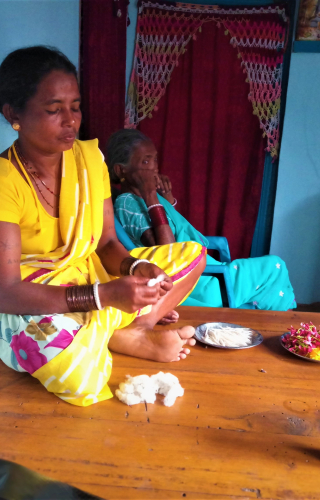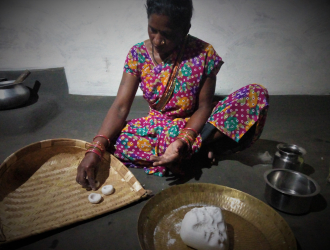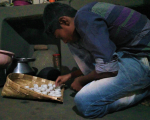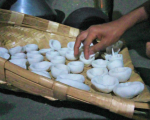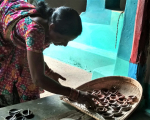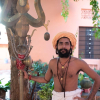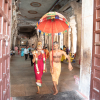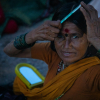The Pan Indian Understanding of Diwali and the Chhattisgarhi festival of Devari
This article focuses on the festival Devari celebrated prominently by the Gonds in Chhattisgarh. This festival carries a strong essence of the Gond culture and the rural context it is embedded in. The Gonds of Chhattisgarh celebrate ‘Devari’ on the same day when Diwali is celebrated i.e. the 15th day of Kartik month according to the Hindi lunar calendar. However, the folk stories behind both the festivals largely differ. As one witnesses the increasing influence of other religious cultures on the ritual practices of the adivasis, yet the folk cultures have managed to retain their ground significantly. To understand the significance of Devari and its departure from other prominent cultures it would be helpful to have a simple overview of Diwali. Diwali, a widely celebrated festival in India is known for ‘lighting lamps’, celebrated on a new moon night in the month of Kartik. The association with lights is largely interpreted as the victory of light over darkness, the victory of good over evil or enlightenment over ignorance. On this day houses, temples, workplaces are decorated and illuminated with earthen lamps. Although, the understanding of ‘lights’ was founded in the use of fire i.e., oil lamps, however, today they have been replaced by their modern rendition of electric or LED lights. Diwali, as all may know is celebrated eighteen days after Dussehra (another Hindu festival). The first day of the festival is marked by Dhanteras, when one is encouraged to buy steel, silver or gold. The day after Dhanteras is called Choti Diwali, when a few fire crackers are burnt and other preparations for Diwali are completed. While this is how we come to know Diwali in the popular culture, Dr. Debal Deb, interestingly shared that Diwali may have actually been a festival initiated by the farmers to save their rice plants. During this time of the season, the farmers face a threat from a pest called brown planthopper. This pest both feeds on the rice and transmits two viruses i.e. rice ragged stunt virus and rice grassy stunt virus. An attack by the brown planthopper may sweep up to sixty percent of the crop. This threat of the pest is highest during the days of Diwali. To control the population of these pests every house lights several oil lamps; since the fire of the lamp attracts the brown planthoppers and kills them. One may see this as an indigenous method to control pest attack. However as the popular narrative weaves, according to Ramayana, a Sanskrit epic, Diwali is believed to be the day when Rama (an incarnation of lord Vishnu) returned to Ayodhya with Sita and Lakshmana. A day when the city rejoices the return of their king from a definite period of exile or vanavaas. Thus, the Hindus clean, renovate and decorate their houses, wear new clothes, offer worship to the goddess Lakshmi (the goddess of wealth and prosperity) at dusk, light firecrackers and share a festal dinner. They celebrate Govardhan Puja, and Bhai Dooj on the days following diwali. Many others mark this day as Vishkarma Puja when the work spaces are worshiped. This is largely how Diwali is celebrated in the country. And while many celebrate the joy of Diwali, the rural communities in and around Bastar, celebrate a Devari. A festival that marks first the celebration of labour of the herding community in the village and secondly, Devari marks the celebration of the first mythical marriage in the Gond pantheon. This article seeks to unfold the alternative narrative of Devari as celebrated by the Adivasi rural communities in Chhattisgarh. The article by elaborating on the significance and rituals performed during Devari, seeks to foreground why the festival is an important event in the Gond almanac.
The Shephard's Day
Devari or Diyari is the auspicious occasion when the rural community members come together to worship the new crop and cattle. In certain villages of Bastar, tillers (stem produced by rice plants) with rice seeds are carried to the village and normatively offered to marriage to King Narayan. This custom of marriage is called ‘Laxmi Jagar’. Before climate change had affected the paddy cropping cycles (for some folk varieties), elders elaborate how the crop was harvested before Diwali. Originally when the villages did not have access to the outer world, the date for Devari was fixed by heads of the villages. These heads of the villages are ‘mati-pujaris’ i.e., they who are chosen to worship the soil/earth/land (it philosophically remains difficult to distinguish). Mati (soil/earth/land) remains a very important aspect of Gond ways of life. Their primary saviour goddess Shitla– is the guardian deity of the village who protects a gondi village, its people, the flora, and its fauna. Goddess Shitla is said to be the ancestor of the first family that settled on that land; other families who join the first family continue to worship and seek her blessings to keep them from harm. Goddess Shitla is represented by ‘mati’. The Gonds believe, he who can serve the goddess is chosen by the goddess herself. When the pujari or priest has to be chosen, the contenders sleep in the temple. It is believed, he who finds termites below his bedding is the ‘chosen one’. These mati-pujaris came together to decide on the date of Devari. However, now, the date of Devari (coinciding with Diwali) is pre-decided in the calendars.
Devari is largely celebrated across the rural communities as the shepherd’s day. In Bastar, the shepherd is called dhorai (Jagdalpuri, 2016). The shepherd may belong to any community; in Bastar they mostly belong to the Mahra community and in north Chhattisgarh they belong to Yadav community. The shepherd is the focus of this festival while cattle and the cattle owners merely add to the rituals. On the first day, the shepherd invites the cattle owners for lunch. He welcomes and offers them food with a lot of respect. He acknowledges their assistance and shows gratitude for keeping him employed. He expresses his extreme gratefulness for being given work and food. The Mahra shepherd is offered cooked meals two times a day by the cattle owners as part of his remuneration. This is called ‘bhadi’ in the local language. Shepherds from other castes like Yadavs, manage their meals by themselves and may be remunerated in the form of cash, kind (through paddy) or both. The feast hosted by the shepherd is a way to keep the cattle owner satisfied and happy. It also helps him/her have a closer relationship with the owners such that his job remains assured. In the evening, the shepherd or men belonging to the community of shepherds visit each cattle-owner’s house. They walk together with live orchestra, dancing and singing to their folk songs. When they reach the cattle-owner’s house they tie ‘gaitha’ or ‘jaitha’ in the cattle’s neck. These are similar to garlands made of roots of the Palash (Butea monosperma) tree, crafted by the shepherd himself. These garlands are sized differently for cows and buffaloes. The buffaloes are tied with ‘gaitha’ and the cows are tied with ‘chui’. This is a way in which the shepherd shows respect and gratitude to the cattle. The place where the cattle lives, called ‘gauthan’ has an oil lamp that burns through the night. The shepherd’s community sing and dance (performing Raut nacha) with the music. Their bodies sway under the effects of the locally brewed alcohol as they celebrate their labour through the year. At the end, they are gifted with handful of paddy.
The Night: Signifying The First Gond Marriage
The night of Devari, is when everyone goes to sleep early. Past mid-night women in their melodious voices sing a folk song and knock at the locked doors of each household. The song is a request by the women of the village, they invite daughters of the household to accompany them. As the women sing and young men from the village play their musical instruments an enchanting energy takes over. Slowly, young women dressed in beautiful sarees come out the house. They carry an oil lamp in an earthen pot, which is carefully placed on their head. Each household in the village is visited. At the end, they walk together as a procession. This procession is in fact a marriage procession or baraat. Young women play an important role in Gond marriages. They maintain the liveliness of the occasion. They are also responsible for organizing all the rituals and ceremonies. Thus, the elder married women of the village request daughters of each household to join them. Daughters at the same time represent wealth and prosperity thus, they join this procession to ensure greater fertility and prosperity for the household. The Gond folk tales of Devari reiterate it was on the day of Devari that the first Gond marriage took place between Ishar (male) and Gaura (female); influenced by other religious beliefs Ishar and Gaura are now called Gaura and Gauri. The Gond community is called a set-up or vyavastha of eleven different communities. In the beginning this set-up was ruled by a group leader called Shambhu for eighty-eight consecutive generations. Under the rule of Shambhu, Kupar Lingo was born to Hirva Devi (impregnated by Badadeo– the ultimate creator). At an early age, Lingo created the Gondi language. The language was born out of the sound of a small drum or dumru. Later he invented the gotra system that considered men and women from the same lineage should not get married; through the division the incest taboo was instituted. Gotra refers to the term ‘clan’. Among Hindus the term gotra refers to ‘progeny of a sage’. The Brihadaranyaka Upanishad states the name of seven sages Gautama, Bharadvaja, Viswamitra, Jamadagni, Vashishtha, Kashyapa and Shandilya. Hindus are believed to belong to the lineage of these seven sages. Kupar Lingo, however divided seven hundred and fifty gotras among twelve ancestors (not sages). The first seven ancestors were divided with hundred gotras each, while the last five gotras were divided into ten gotras each. Once this system came into being, the first Gond marriage took place between Ishar and Gaura. Shambhu, the leader of the Gondwana land, was also their teacher/advisor (raj-guru). One may observe that the Gonds break the divide between being a warrior and the administrative advisor. Dhurve (2006), discusses that the first Shambhu Sheikh loved and lived with Gabra (daughter of King Bijasur of Kuyva state). Gabra was Shambhu’s second wife (although the concept and nature of marriage remains contested here). The spiritual folk tales state that goddess Gabra took birth in every generation and married the Shambhu. Local folk tales reiterate Ishar as one of the shambhus and Gaura a reincarnation of Gabra. Ishar and Gaura are therefore believed to be the first couple who adhered to the formal institution of marriage after lord Lingo developed the gotra system and thus the first marriage took place on the new moon night of Devari. The story gives us a window to form an understanding of many forms of living together other than marriage that have historically existed among the Gonds.
The preparations for Devari start a week before the decided date. On a square wooden tray, representations of Gaura and Ishar are placed. There are no idols rather the wooden tray is decorated with flowers, paddy, oil lamps, dry coconut etc. The representative symbol used for Ishar is a foot long stick in the square tray (a signifier of the phallus). The wooden trays in some villages are made in one household and in many others made in two different households. When the tray is crafted in two households specifically Netam and Kunjam households are chosen; for they belong to different gotras given which, marriage between them remains acceptable. At last, the village procession reaches the house of the bride (Gaura) and the groom (Ishar). The live orchestra played by the young men creates the lively atmosphere of marriage. Men and women peep through the door to get a glimpse of their symbolic bride and the groom. Ishar and Gaura are worshiped, and then are carried by two young women of the village. The two young women carry the wooden trays on their heads, to a place where arrangements for the marriage are made. As the marriage take place, the village priest is believed to be possessed by the gods. He dances to the tunes of the marriage folk songs. He also gets agitated if the rituals are not performed properly. Most times women and men wait till the break of dawn to go home. They later come again in the day time to worship the bride and the groom.
God-Dhan Puja
On the next day of Devari, god-dhan puja takes place. This day remains more auspicious than the day of Devari. On this day, each household cooks five kinds of tubers (some from the forest) and pumpkin. They also prepare khichdi (i.e. rice, some green vegetables and lentils like arhar, harwa, moong or urad cooked together with spices and salt). The bullocks and cows are given this meal as gratitude for their service. They are worshiped with flowers, tika and aarti. This ritual gets over before twelve in the afternoon. In the afternoon, women from the shepherd community visit each household to paint specific designs on their walls. These designs are believed to bring protection and prosperity to the household. They also sometimes entertain the members of the family with songs and dance as part of their ritual. In exchange they receive handful of paddy. At night the men of the shepherd community again visit each household with the musicians and bless the family members. They are also given paddy as a token of gratefulness.
Gauthan Puja
On the second or the third day as decided by the village the ‘gauthan pujan’ takes place. Gauthan is where the village cattle (mostly bullocks and cows) stays. Gauthan may be an open place or under the shade of big trees like Mango or Banyan tree. Gauthan is the place where the shepherd brings the cattle to rest in the afternoon. He too, eats his lunch near the gauthan. After lunch and some rest the shepherd again takes the cattle to the woods. This place remains of great importance to the people of the village and thus, for the protection of the gauthan, gauthan deo or sahadadeo is worshiped. The bullocks and cows from each household are brought to the gauthan. Their horns are tied with big cloth materials called ‘singoti’ when they reach the gauthan. As if the bullocks are dressed for this occasion. The cloth tying is considered an auspicious ceremony. Sahadadeo is worshiped with the locally brewed alcohol called mahua. The lord is served with the sacrifice of a chicken. The chicken is taken by the shepherd. In a game the shepherd runs behind the bullocks and when he manages to catch him, he also keeps the cloth that was tied on his horns. The cattle owners also carry some paddy for the shepherds. At last the shepherd also offers some token money as part of the singti-dakhni-dastur ritual. The next day is called the basi tihar when everyone comes together to enjoy good food, alcohol brews, in the company of their guests.
Devari: A Gond Rural Festivity
Thus, Devari is an integral festival to the Gond rural community. The village does light oil lamps in the evening on Devari but traditionally the lamps are made of rice flour. These oil lamps are placed by the children in front of each household in the village. This gesture may be seen as a prayer for each one’s prosperity. The well being of an adivasi household also lies in the wellbeing of the other families in their village. Thus, praying for the other is an integral part of their culture. Given Devari is the eve of the first Gond marriage, bride finding (where the groom’s family goes from village to village to find a suitable bride) starts only after Devari. Thus, Devari may be seen as the start of the marriage season. On the other hand, the marriage season ends on the day of Akti Bihau. On this day the young in the village host a marriage. Two houses are chosen in two hamlets and two dolls (one male and one female) are placed in the selected houses. The young women take care of the bride (doll), whereas, the young men carry the groom (doll) in a marriage procession to the bride’s house. Sometimes the elders also become a part of this event and the whole village inter-dines just like in marriage feast. The marriage season for the gonds, like elsewhere in the country, begins post-harvest when people of the village are done with their agricultural responsibilities and have been able to save money after the sale of their harvest. Devari is thus, a time when most peasants have harvested their crops or are ready to do so. The day is also an auspicious occasion for the herding community- the shepherds, cattle, and the cattle owners. Where on one hand, the shepherd community offers gratitude for being given work, food, and respect. While on the other hand, the cattle owners are grateful to the shepherding community for caring for their animals and taking the cattle to the forests for grazing, such that his/her rice fields remain safe.
Thus, Devari has a) a strong rural background, b) a sense of remembrance and repetition of a significant Gond cultural-spiritual event and c) an understanding of well being at the village level. These three characteristics of Devari, mark an incisive difference from Diwali (as discussed in the introduction). Devari thus, although celebrated on the 15th day of kartik month according to the Hindi calendar, has a narrative distinct from Diwali.
References
Jagdalpuri, L. (2016). Adhyay 7. In Bastar Itihas evam Sanstriti. Bhopal, India: Madhya Pradesh Granth Academy. p. 115-133.
Durve, B. (2006). Koya Punem Gondiyan Gatha. Jabalpur, India: New Chanda Offset Printers.
This content has been created as part of a project commissioned by the Directorate of Culture and archaeology, Government of Chhattisgarh to document the cultural and natural heritage of the state of Chhattisgarh.
